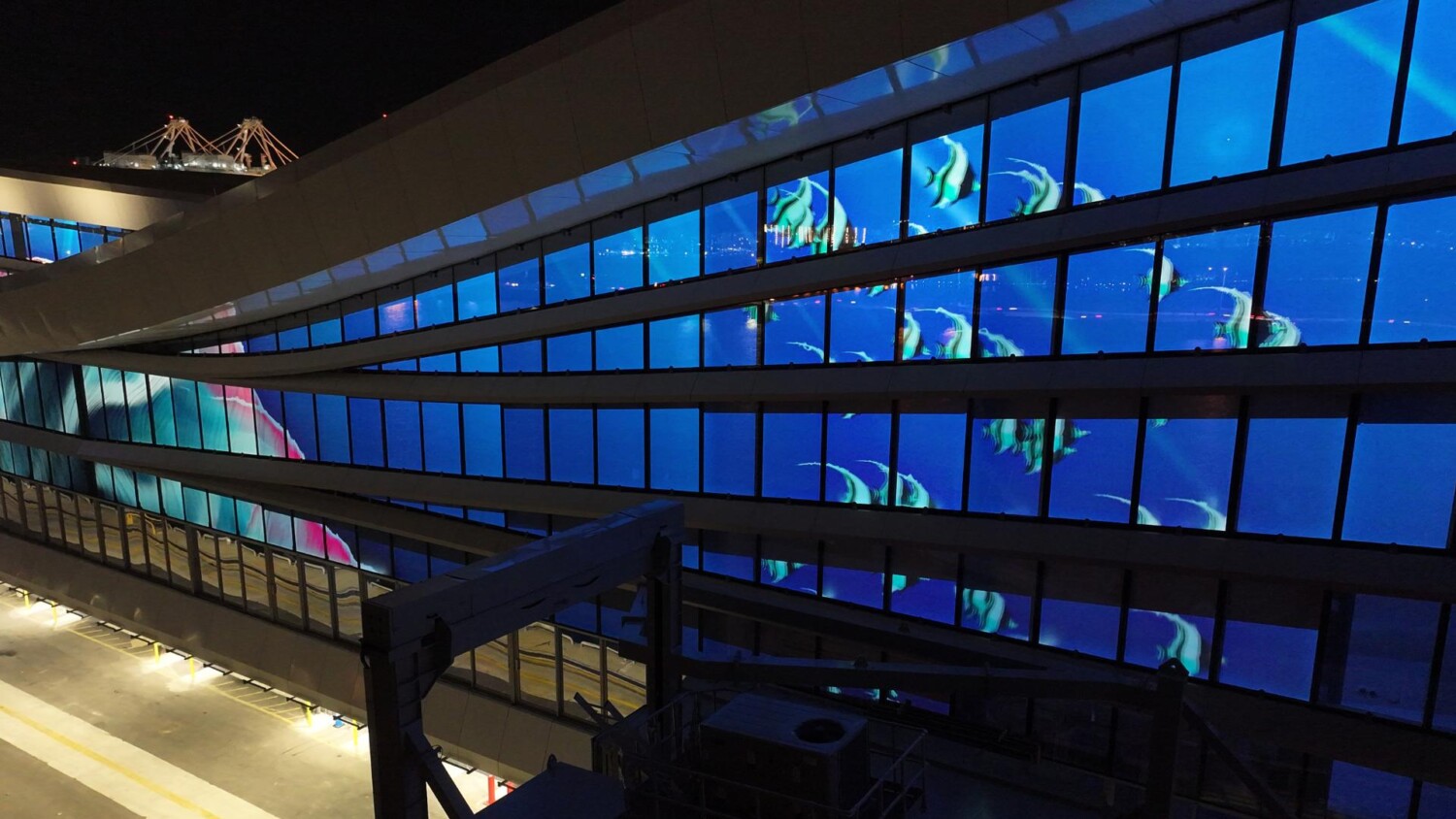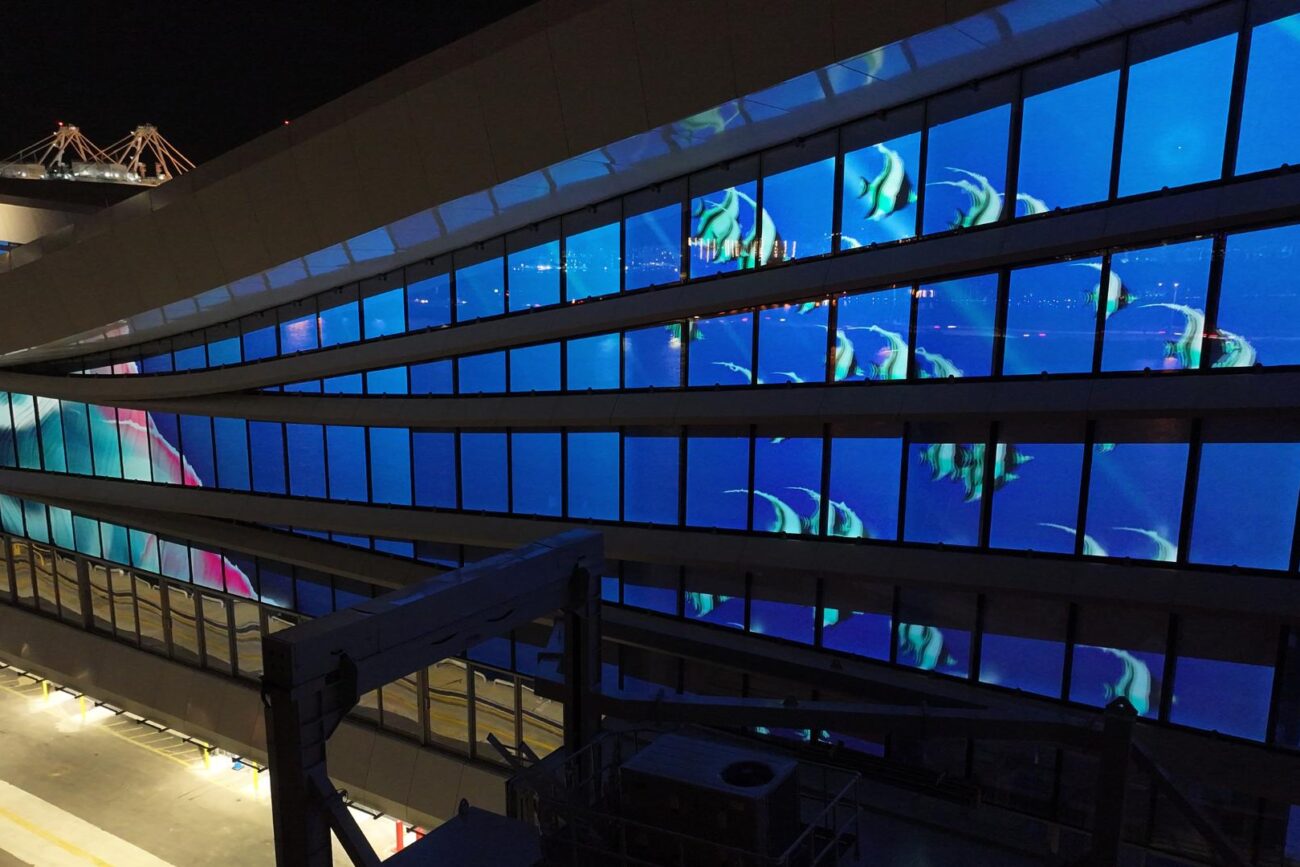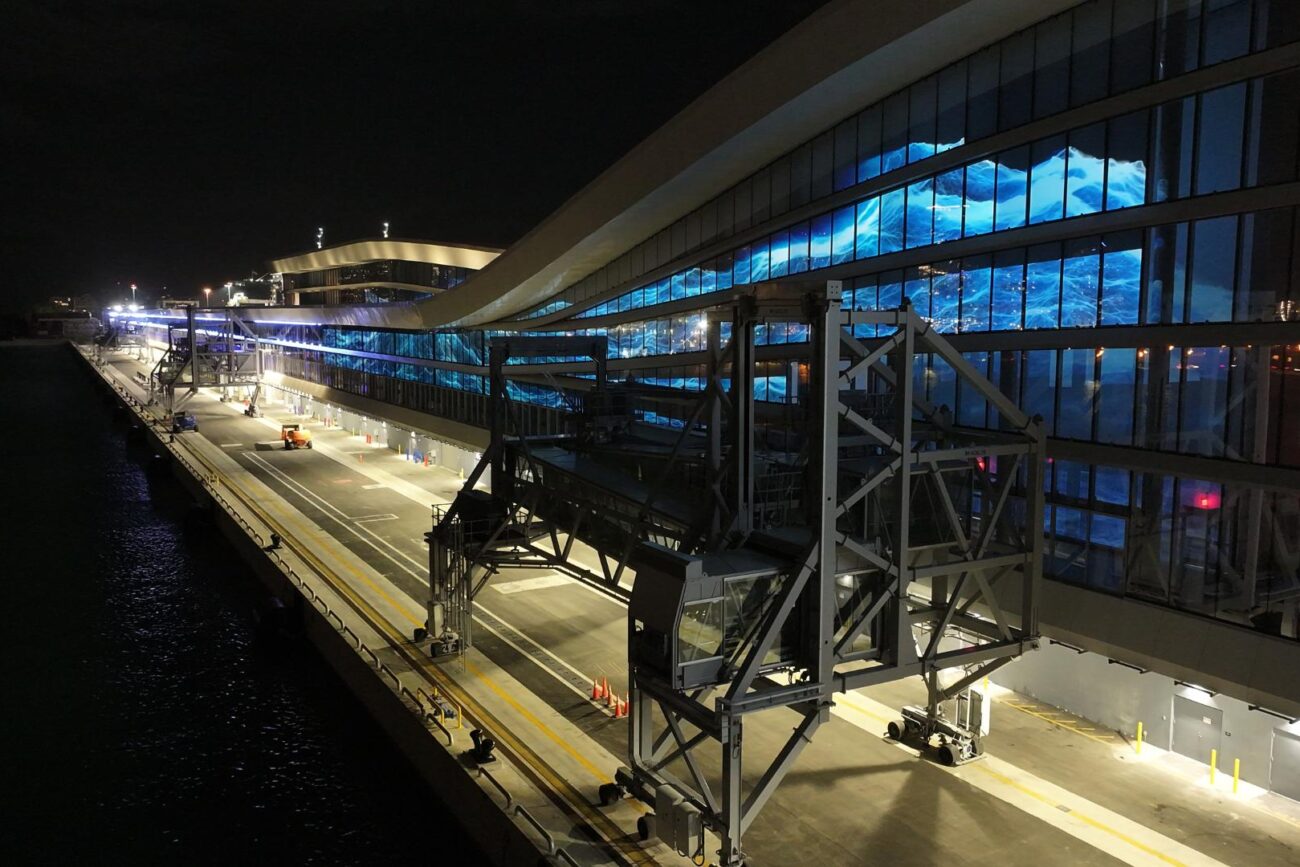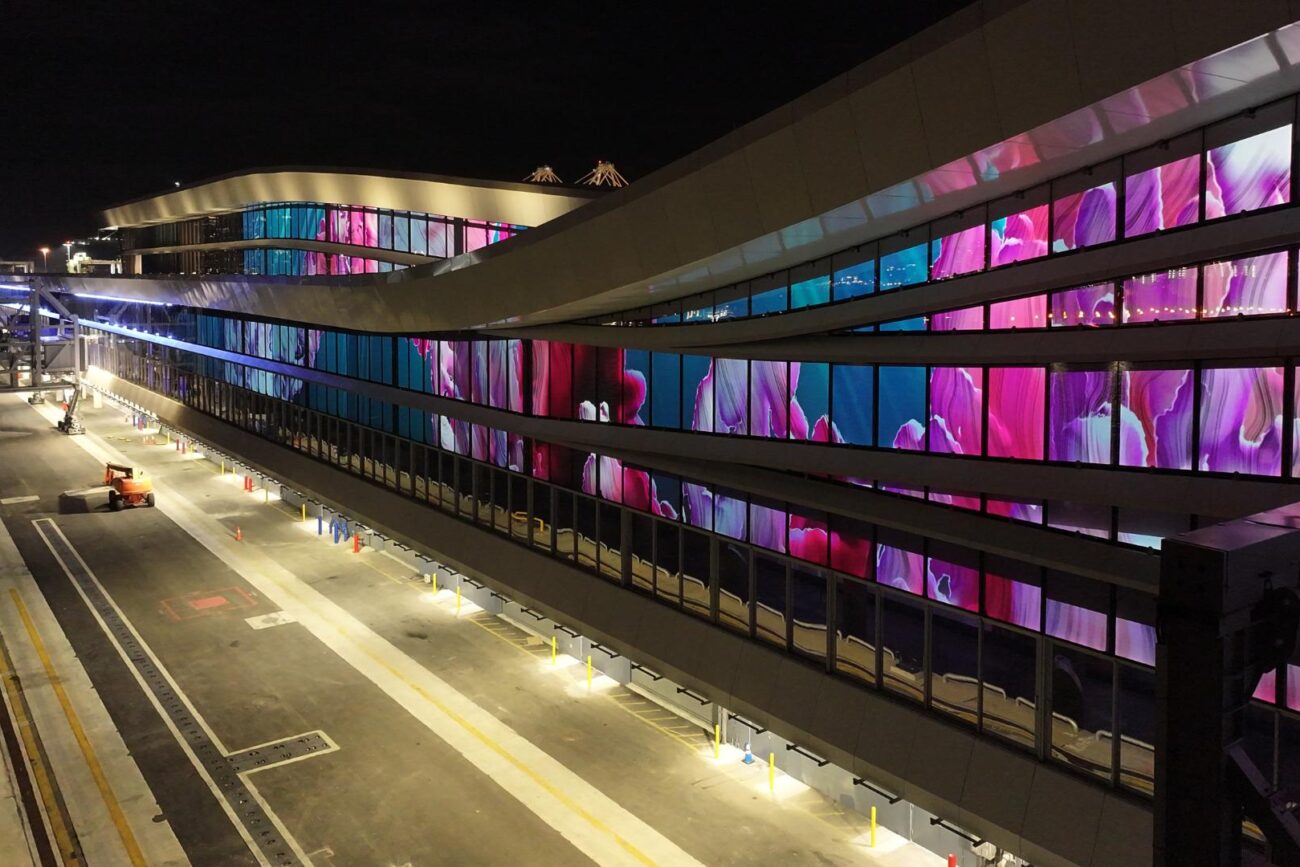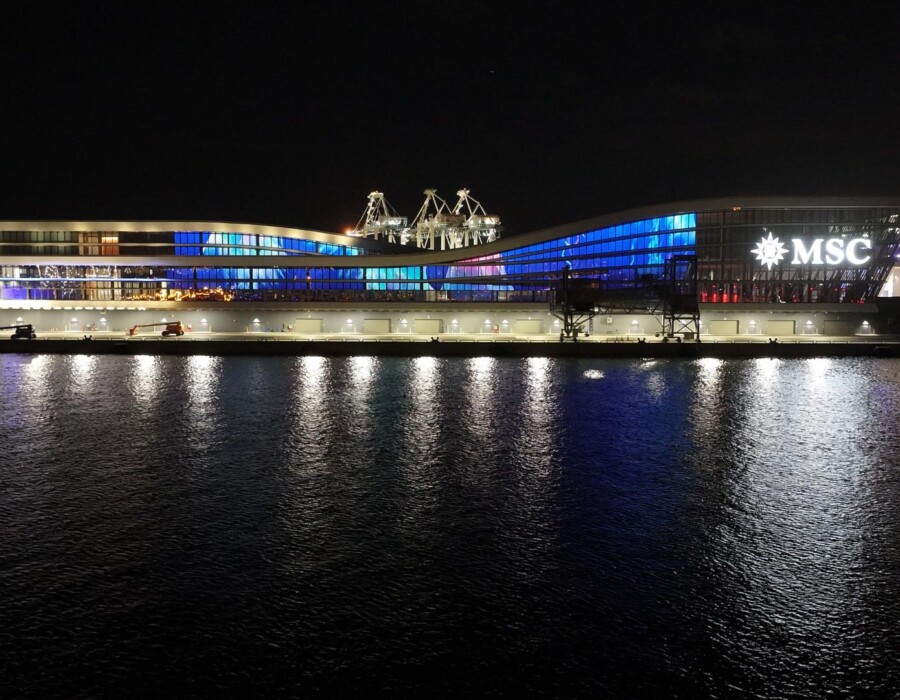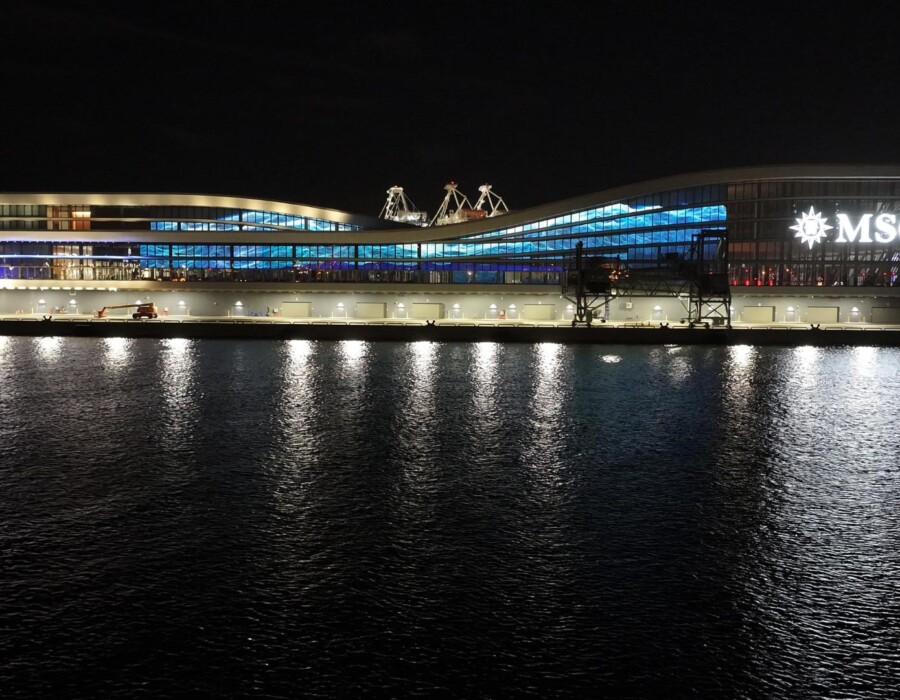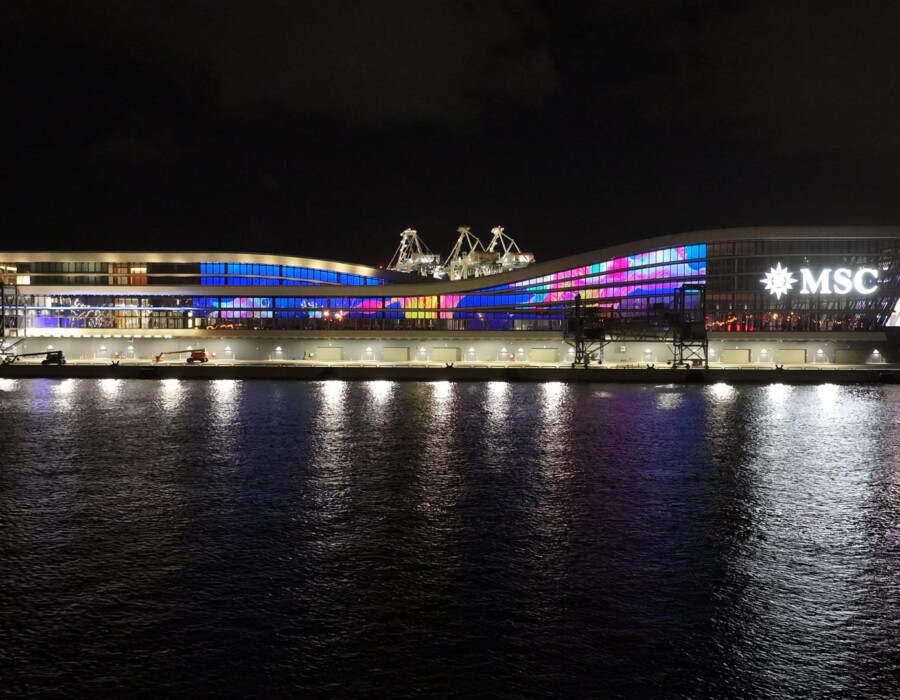Maris by Daniel Roney
MSC Launches World’s Largest Cruise Terminal with Landmark Maris Art Installation
Featured Capabilities
- Projection Mapping
- High-Resolution Media Server System
- Automated Alignment System
- 4k Production Workflows
- Show Controls Programming
Client Story
Maris MSC Port Miami
At the heart of Miami’s new MSC Cruise Terminal—the world’s largest—an ambitious public art installation titled Maris is transforming how architecture, technology, and environmental storytelling converge. Named after the Latin word for “of the sea,” Maris was conceived by artist Danielle Roney and commissioned through Miami-Dade County’s Art in Public Places program to create an immersive media experience visible by sea, land, and screen.
Designed by Arquitectonica and built by Fincantieri Infrastructure Florida, the new terminal will welcome up to 36,000 passengers daily. Even amid this massive scale, Maris stands out—a 166-million-pixel animated canvas spanning 18 projection zones, including vivid nighttime projections onto Gauzy smart glass surfaces that bring the terminal’s architecture to life. The display evolves daily, reflecting the ever-changing state of the oceans.
THE PROJECT VISION
Danielle Roney reached out to Quince Imaging in the early concept phase of the project in 2022. Her vision: to create a living, data-informed monument to oceanic transformation, embedded into a landmark transportation hub. Unlike typical AV installations with advertising or branding goals, this media display is dedicated purely to art. It would not feature digital signage or promotional content—a bold decision made in collaboration with the support of MSC and Art in Public Places.
The creative challenge was immense. From the beginning, Maris was conceived as a hybrid public artwork and immersive experience, operating inside an active mega-construction zone. The building itself was still in design and construction. Projection infrastructure would need to be embedded alongside steel, concrete, HVAC, and life-safety systems. The creative canvas stretched across the terminal interior and smart glass exteriors, with the entire project unfolding amid evolving specifications, tight regulatory oversight, and multiple stakeholder visions.
Quince Imaging’s scope of work included:
- Conducting initial feasibility and system modeling
- Coordinating embedded projector installation alongside terminal construction
- Designing, engineering, and fabricating custom mounts and enclosures
- Managing power, cooling, networking, and projection alignment across 18 discreet projector zones
- Building a real-time media server array capable of driving 166 million pixels
- Implementing advanced monitoring and real-time scheduling controls
Quince navigated complex build timelines, trade coordination with Fincantieri, and the unique constraints of constructing an AV system for a terminal not yet built.
Working on a project where the artist’s vision was so central and non-commercial made this truly special, said a Quince team lead. Our job was to help Danielle build a platform for storytelling at a scale few projects ever attempt.-mentions– Eric Gazzillo, Vice President of Innovation
TECHNOLOGY BEHIND THE EXPERIENCE
At the core of the Maris installation are (18) Christie RGB M4K25+ Laser Projectors, selected for their exceptional brightness, color fidelity, and reliability. Each projector was strategically embedded across the terminal’s massive interior with fully custom enclosures that aligned with ceiling finishes and maintained a minimalist design aesthetic.
High-resolution visual content is generated and rendered in real-time using (7) custom-built media servers, driving 166 million active pixels with seamless edge blending and synchronization. Quince designed an advanced pixel mapping and calibration system to ensure uniform brightness and resolution across a canvas that spans thousands of square feet.
Control and Flexibility
To manage the complexity of signal routing and show control, the system is built on a robust AV-over-IP backbone:
- (25) DisplayNet DN300 units for signal transport
- Q-SYS vCore virtualized processor for centralized control
- Netgear M4300 96X switch for high-bandwidth networking
This state-of -the-art responsive environment, developed by The Experiential Company (TEC), produces 5 billion pixels per second in translating real-time regional NOAA data sets into virtual environmental conditions. At the heart of this complex system are advanced software tools from Derivative TouchDesigner and SideFX Houdini, alongside TEC’s proprietary technology.
A people populated project, Maris is created by some of the most talented and dedicated animators and software engineers in the world. Their immense efforts bring this symbiotic, living virtual world into reality. This supports an ongoing exchange of interdependent experimentation and innovation at the center of this oceanic cultural infrastructure. – Roney reflects.
Infrastructure & Cooling
Even given the scale of the project, physical footprint was a key project driver. Due to the massive span of the displays, equipment racks were centralized in a hot & dusty mechanical room. To overcome this challenge Quince deployed custom liquid-cooled equipment racks from Display Devices to maintain thermal performance in Florida’s humid climate. This novel solution helped keep the Nvidia RTX 6000 ADA graphics array cool and stable over time.
IMPRESSIVE RESULTS
Though MSC’s new terminal opened in April 2025, the impact of Maris is already being felt. The project has drawn international attention for its fusion of environmental data, immersive art, and architectural scale. For passengers, it offers a one-of-a-kind welcome experience; for locals, it transforms public space into a living message about ocean health.
Beyond its beauty, Maris sets a new standard for blending AV technology with civic infrastructure, blurring the lines between structure, story, and sustainability.
For Quince Imaging, Maris represents a proud step forward—pushing the limits of immersive AV and hinting at the future of cruise terminals, museums, and public spaces worldwide.

